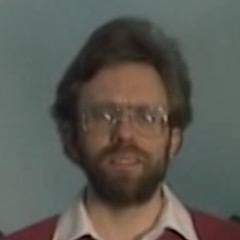
Computer Simulation on Granite Mountain Railway
Doug GeigerIn building his Granite Mountain Railway, Doug Geiger has put in years of his own time. He has had a hand in every aspect of the railroad. In this video, Geiger discusses with Allen Keller the layout’s computer software system, signaling, scenery techniques, and more.
Geiger, a computer software writer by profession, wrote his own complicated computer program for his layout. As a software writer, he had access to large machines, which enabled him to write his own program without the hassle of trying to use a small PC. The computer program simulates shipping, consigning, moving empties back, homeroads, interchange between seven roads, narrow gauges, standard gauges, swapping of commodities, and road leveling all the industries. It also prints one to two pages of wheel reports. These reports detail what the cars are, where to pick them up, and how to set up the car.
The layout also features working brass signals. The signals are bought from Integrated Signal Systems out of Rochester, New York, where the electronics to drive the layout are also from. Dispatchers use the signals to make meets and passes. The top level of the layout has a working train order board, which dispatchers throw as a station agent. They can stop trains on green and red boards and make meets and passes.
Geiger discussed some of his scenery techniques including a demonstration of modeling pine trees. Geiger uses india ink and rubbing alcohol for weathering and uses typical scenery techniques with plaster and ground foam. He makes his pine trees using macrame jute. The fibers can be purchased pre colored or brown and dyed green. The first step is to unravel the fibers, which are very curly. To straighten then, he soaks the strands in water for ten minutes, and then stretches them out while wet.
After cutting the strings at varying lengths, he bends a florist wire in half and uses a vise grip to clamp one end of the bend to keep it in place. He lays out flat the basic tree shape and uses the wire to sandwich them, putting the end in an electric drill to twist the wire around the strands. Pulling the fibers apart to fluff finishes the tree for a realistic look. Hairspray is used to keep fibers in place. For two cents a tree and five minutes of work, Geiger has perfected a cheap, easy, and fast way to produce trees for his model.
